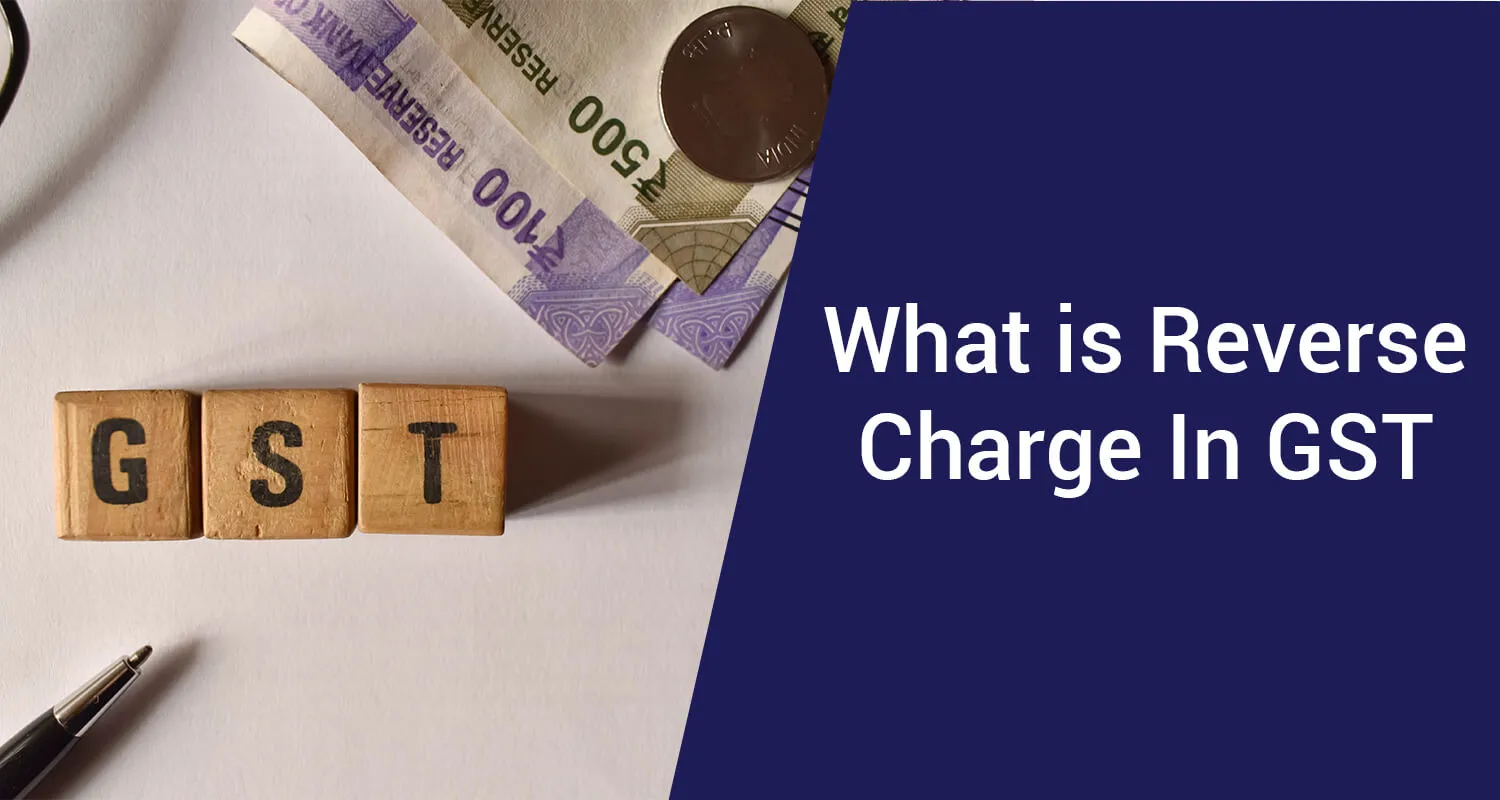What is Reverse Charge In GST?

In the Goods and Services Tax (GST), the reverse charge mechanism (RCM) plays a significant role in the Tax landscape. This mechanism shifts the tax payment responsibility from the supplier to the receiver of goods or services. Let's explore the meaning, features, and benefits of the reverse charge in GST.
Reverse Charge in GST Meaning
Reverse charge in GST refers to a system where the recipient, instead of the supplier, is liable to pay the tax to the government. Typically, under GST, the supplier collects the tax from the recipient and remits it to the government. However, in certain cases specified by the law, the recipient pays the tax directly to the government. This mechanism is known as a reverse charge.
Features of Reverse Charge in GST:
- Recipient's Liability: Under reverse charge, the liability to file or pay GST is shifted from the supplier (as earlier required) to the recipient of goods or services. This alters the traditional tax payment structure and places the onus on the recipient to fulfill the tax obligations.
- Specified Transactions: The reverse charge mechanism applies to specific transactions prescribed by the GST law. These transactions often involve certain goods or services or may pertain to particular categories of taxpayers.
- Compliance Requirements: Recipients under reverse charge must comply with the GST regulations and promptly fulfill their tax obligations. This includes timely payment of taxes and accurate record-keeping to ensure transparency and adherence to legal requirements.
- Input Tax Credit (ITC): Recipients paying tax under reverse charge may avail themselves of the input tax credit, provided they meet the conditions stipulated under the GST law. This allows them to offset the tax paid on purchases against their output tax liability.
Sapna aapka. Business Loan Humara.
Apply NowHow it works:
In practical terms, the reverse charge mechanism operates when a registered person buys goods or services from an unregistered supplier or a notified category of registered suppliers. In such cases, the recipient is required to calculate and pay the applicable GST on the transaction directly to the government. The recipient then claims input tax credit for the tax paid under reverse charge, subject to compliance with the relevant provisions.
Conclusion:
The reverse charge mechanism under GST introduces a shift in the tax payment dynamics, placing greater responsibility on the recipient of goods or services. By extending the tax liability to recipients in certain scenarios, the mechanism aims to widen the tax base, enhance compliance, and curb tax evasion. Understanding the nuances of reverse charge is important for businesses to make sure that they meet GST regulations and manage their tax obligations effectively.
What is reverse charge mechanism in GST with example?
Let's consider an example to understand how the reverse charge mechanism works in GST:
Suppose a registered dealer, Mr. A, purchases legal consultancy services from an unregistered individual consultant, Mr. B, worth Rs. 10,000. Under normal circumstances, Mr. B would not charge GST on his services since he is not registered under GST. However, due to the reverse charge mechanism:
- Mr. A, the recipient of the services, is liable to pay GST directly to the government on behalf of Mr. B.
- The applicable GST rate for legal consultancy services is 18%, which means Mr. A needs to pay Rs. Under reverse charge, 1,800 as GST (18% of Rs. 10,000).
- Mr. A then includes this Rs. 1,800 as part of his GST liability in his regular tax returns.
- He can also claim an input tax credit for this Rs. 1,800 against his output tax liability, provided he satisfies the conditions for claiming ITC.
This example illustrates how the reverse charge mechanism operates in GST, shifting the tax liability from the supplier (Mr. B) to the recipient (Mr. A) in certain transactions.
FAQs
Q1. What transactions are covered under the reverse charge mechanism in GST?The reverse charge under GST applies to specific transactions as notified by the government. Generally, it includes transactions involving unregistered suppliers or specified goods and services.
Q2. Who is liable to pay GST under the reverse charge mechanism?Under the reverse charge mechanism, the onus to pay GST moves from the supplier to the recipient of goods or services.
Q3. Can a recipient claim input tax credit (ITC) for GST paid under reverse charge?Yes, recipients paying GST under reverse charge may claim input tax credit, subject to compliance with the relevant provisions of the GST law.
Q4. How does the reverse charge mechanism impact small businesses?Small businesses may face an increased compliance burden under the reverse charge mechanism, especially if they frequently engage in transactions subject to reverse charge.
Q5. Are there any exemptions or thresholds for the reverse charge mechanism?Yes, certain exemptions and thresholds may apply to the reverse charge mechanism, depending on the nature and value of the transaction. It's advisable to consult a tax expert or refer to the latest GST notifications for specific details.
Sapna aapka. Business Loan Humara.
Apply NowDisclaimer: The information contained in this post is for general information purposes only. IIFL Finance Limited (including its associates and affiliates) ("the Company") assumes no liability or responsibility for any errors or omissions in the contents of this post and under no circumstances shall the Company be liable for any damage, loss, injury or disappointment etc. suffered by any reader. All information in this post is provided "as is", with no guarantee of completeness, accuracy, timeliness or of the results etc. obtained from the use of this information, and without warranty of any kind, express or implied, including, but not limited to warranties of performance, merchantability and fitness for a particular purpose. Given the changing nature of laws, rules and regulations, there may be delays, omissions or inaccuracies in the information contained in this post. The information on this post is provided with the understanding that the Company is not herein engaged in rendering legal, accounting, tax, or other professional advice and services. As such, it should not be used as a substitute for consultation with professional accounting, tax, legal or other competent advisers. This post may contain views and opinions which are those of the authors and do not necessarily reflect the official policy or position of any other agency or organization. This post may also contain links to external websites that are not provided or maintained by or in any way affiliated with the Company and the Company does not guarantee the accuracy, relevance, timeliness, or completeness of any information on these external websites. Any/ all (Gold/ Personal/ Business) loan product specifications and information that maybe stated in this post are subject to change from time to time, readers are advised to reach out to the Company for current specifications of the said (Gold/ Personal/ Business) loan.



